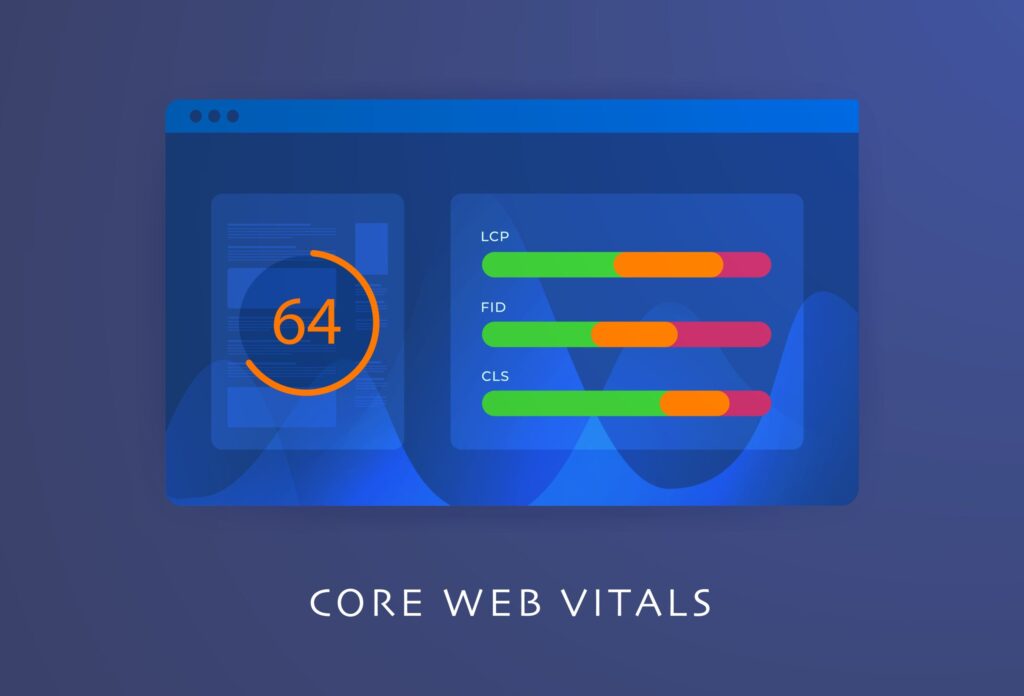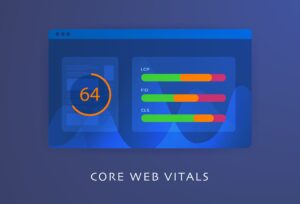Apr. 8, 2024

How Can You Improve Core Web Vitals if You’re Not a Coder
In an increasingly digital world, where your website is often the first point of contact between your business and potential customers, its performance is paramount. Google’s Core Web Vitals assessment and metrics play a vital role in determining how well your website fares in the digital landscape.
However, for many business owners and website administrators who aren’t proficient in coding, improving these essential performance indicators may seem like a daunting task. But fear not; there are steps you can take to enhance your website’s technical performance and ace the Core Web Vitals test without delving into the intricacies of coding.
What Are Core Web Vitals?
Before we dive into the nitty-gritty of improving Core Web Vitals, let’s briefly understand what they are and why they matter. Core Web Vitals are a set of user-centered metrics developed by Google to measure the loading performance, interactivity, and visual stability of web pages. These metrics are based on actual user data, which means they reflect real user experiences on your website.
Why Are They Important?
Core Web Vitals are critical for several reasons:
User Experience: Google places a significant emphasis on providing users with a great online experience. Speed and performance are central to delivering this experience. Slow-loading web pages can frustrate users and lead to high bounce rates.
Conversion Rates: Poorly performing websites can drive visitors away, resulting in lost conversions. Whether you’re driving traffic through paid advertising, social media, or SEO, a website that doesn’t perform well can be a costly hindrance.
Competitive Advantage: Search engine result pages (SERPs) are highly competitive. When multiple websites offer similar content, the one with a better user experience is more likely to secure higher rankings and attract more visitors.
Search Engine Rankings: Google considers Core Web Vitals as one of the factors in determining search rankings. A website that performs well on these metrics is more likely to rank higher in search results.
Can You Improve Them If You’re Not a Coder?
Absolutely! You don’t need to be a coding expert to enhance your website’s Core Web Vitals. There are several steps you can take with access to your website’s content management system (CMS) and hosting account.
Let’s explore these non-coder-friendly strategies:
1. Optimize Images
Images play a significant role in website performance. Here’s what you can do:
Compress Images: Use image compression tools before uploading images to your website. Smaller file sizes load faster.
Use the Appropriate Format: Choose the right file format for your images. Use JPEG for photographs and PNG for graphics.
Web-Optimized Formats: Consider using modern formats like WebP, which offer high-quality images with smaller file sizes.
2. Reduce the Number of Elements
Simplify your web pages by reducing the number of elements and minimize HTTP requests by combining multiple style sheets and scripts into a single file.
3. Improve Server Response Time
A sluggish server response time can adversely affect Core Web Vitals. Here’s what you can do:
Choose Adequate Hosting: Opt for a hosting plan that provides sufficient resources to ensure speedy response times.
Upgrade Hosting: If you consistently experience slow response times, consider upgrading your hosting plan to one with better performance.
4. Use a Caching Plugin
Caching can significantly improve website speed. Leveraging browser caching can help reduce load times for returning visitors, as their browsers store certain elements locally.
5. Use Lazy Loading
Lazy loading is a technique that defers the loading of non-essential elements until they are needed. This ensures that only visible content loads initially, leading to faster page rendering.
6. Test on Mobile
A mobile-friendly website is essential for a positive user experience:
Ensure Responsiveness: Confirm that your website is responsive and adapts well to various mobile devices.
User-Friendly Mobile Experience: Test your site on multiple devices to ensure smooth navigation and usability.
7. Minimize Third-Party Software
Excessive third-party scripts and plugins can slow down your site. Evaluate the necessity of external scripts and plugins. Remove those that are unnecessary.
8. Regularly Update CMS and Plugins
Keep your CMS and plugins up to date. Updates often include performance enhancements that can positively impact your Core Web Vitals.
9. Clean Up Old Plugins
Inactive or obsolete plugins can clutter your website. Deactivate and delete plugins that you no longer need or that are no longer supported.
10. Use a Lightweight Theme
Choose a simple and well-coded theme for your website:
Avoid Complexity: Overly complex designs can slow down your site. Opt for simplicity, especially if you lack coding expertise.
Mobile Compatibility: A lighter theme often translates better to mobile devices, providing a smoother user experience.
Conclusion
In conclusion, improving Core Web Vitals is achievable even if you’re not a coding expert. By implementing these non-technical strategies, you can enhance your website’s performance, deliver a better user experience, and boost your search engine rankings. If you have any questions or need assistance with optimizing your website, feel free to contact us. We’re here to help you achieve your online goals, no matter your technical expertise.
Read More
Read More About
Book with us
Let’s accomplish what you are looking for, our team of experts are here for you.
Let's work togetherWarning: Working with our team may result in excessive creativity, uncontrollable 'aha' moments, and an addiction to perfect pixels. Please proceed with caution.



